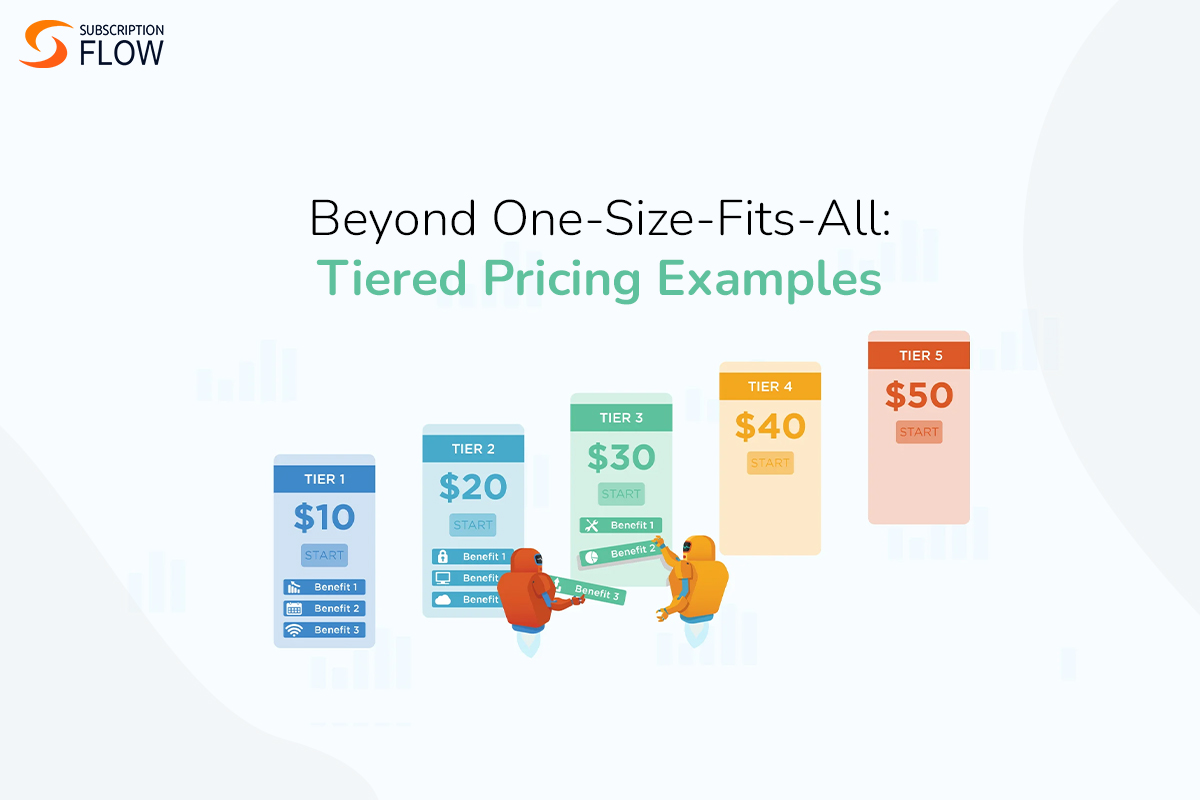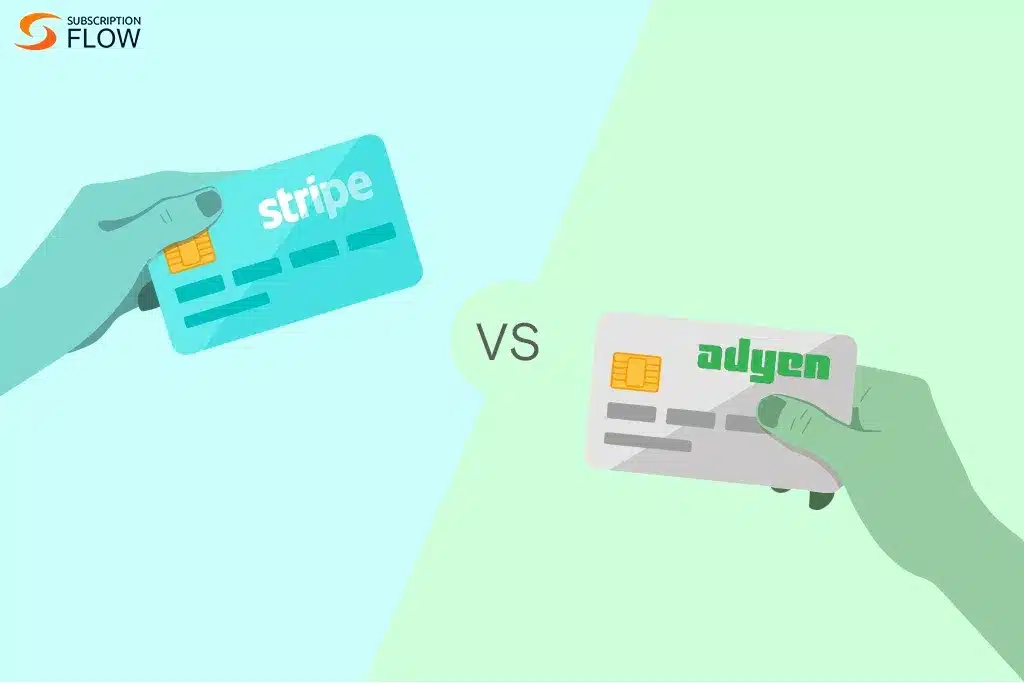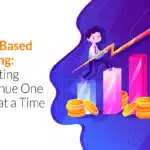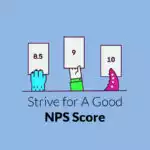
Tiered Pricing Examples: Tech Industry Insights
Pricing models are evolving quickly, with new updates rolling in more and more frequently, businesses of today cannot capture the entire value of their product or service with flat fee pricing alone. Businesses stand to unlock the power of customization and value thanks to pricing innovation.
This is where we get to tiered pricing, a dynamic approach that opens the door to a world of possibilities. It’s a pricing strategy that caters to the unique needs and preferences of every customer, seamlessly aligning their desires with the offerings available.
We can find tiered pricing examples across an array of industries involved in digital products and services, let’s take a look at why that is followed by some successful examples of the tier pricing model.
Why Tiered Pricing Model Works for Businesses Across Multiple Industries
Tiered pricing is the art of segmenting your products or services into distinct tiers, each with its own price point and the corresponding set of features. It’s a carefully crafted system that allows businesses to offer a range of options, enticing customers with tailored solutions that meet their specific requirements.
This pricing model enables your business to:
- Target both cost-conscious individuals seeking essential functionalities or high-value seekers yearning for premium experiences, tiered pricing has got you covered.
- Present different tiers and thereby create a captivating landscape of choice and perceived value.
- Entice customers to be drawn towards the higher tiers, captivated by the additional benefits and enhanced experiences they promise.
- Create the allure of exclusivity and the sense of getting something extraordinary that propels customers to upgrade, leading to increased revenue streams and a more satisfied customer base.
- Attain flexibility and scalability, catering to businesses of various sizes and requirements.
Imagine the possibilities: a software company enticing customers with a free basic version, a mid-tier option with advanced features, and a high-end premium package complete with dedicated support and exclusive add-ons.
Or a streaming service offering tiers that grant access to different content libraries, catering to diverse interests and preferences. The beauty of tiered pricing lies in its ability to accommodate varying budgets, needs, and desires, captivating customers at every level across multiple industries.
Implementation of the Tier Pricing Model
But implementing tiered pricing is an art form in itself. It requires a deep understanding of your target market, detailed segmentation, and strategic differentiation between tiers. Careful thought must be given to the features and benefits offered at each level, ensuring they align with the value proposition and justify the price differentials.
So, join us as we embark on a journey through tiered pricing. Explore real-world examples of businesses that have successfully employed this strategy, delve into the psychology of customer decision-making, and uncover the secrets behind revenue optimization and customer satisfaction.
Pricing Tier Examples Across Industries
A lot of SaaS businesses prefer tiered pricing models. We’ll be taking a look at one example per each of four industries where tiered pricing works well:
- Customer Relationship Management
- Email Marketing
- eCommerce
- Project Management
With further ado, let’s take a look at successful pricing tier examples.
HubSpot – Customer Relationship Management
HubSpot is a popular customer relationship management (CRM) and marketing software platform that offers a tiered pricing model.
This innovative CRM’s pricing model consists of three primary tiers:
- Free,
- Starter, and
- Professional
Additionally, there is an Enterprise tier available for larger businesses with more advanced needs.
Here’s an overview of each tier:
Free Tier
This is a free version of its software, allowing businesses to access basic CRM functionality and marketing tools at no cost. It is designed for SMEs or startups with limited resources or basic requirements.
Starter Tier
This tier is the entry-level paid plan, offering additional functionality beyond the free tier. It is suitable for growing businesses that require more advanced features and expanded capabilities. The pricing for this tier is typically affordable and varies based on factors like the number of users, contacts, and the level of functionality needed.
Professional Tier
This tier is designed for businesses that need more comprehensive marketing and sales tools. It provides advanced features to streamline and optimize marketing campaigns, lead management, and customer engagement.
Enterprise Tier
The Enterprise tier is the most advanced and customizable option offered by HubSpot. It is suitable for large businesses with complex marketing and sales requirements. It provides access to all the features offered by HubSpot, along with additional benefits such as advanced reporting, predictive lead scoring, dedicated support, custom event triggers, and more.
The pricing for the Enterprise tier is typically higher and is determined based on factors like the number of users, contacts, and specific customization needs.
Mailchimp – Email Marketing
Mailchimp‘s tiered pricing model is designed to provide different features to accommodate the needs of various types of users, ranging from individuals and small businesses to larger organizations with more extensive marketing requirements.
Here’s a general overview of the tiers typically offered:
1. Free Plan
Mailchimp offers a free plan that allows users to have up to a certain number of subscribers and send a limited number of emails per month. This plan provides basic features making it suitable for individuals or small businesses with relatively low email marketing needs.
2. Essentials Plan
This is the first paid tier in Mailchimp’s pricing model. It offers additional features beyond the free plan, such as advanced audience insights, customizable email templates, and customer support.
The pricing for this plan is usually based on the number of subscribers you have and the number of emails you send per month.
3. Standard Plan
The Standard Plan is aimed at businesses with growing needs. It includes all the features of the Essentials Plan and offers additional functionalities. The pricing for this plan is based on the same factors as the Essentials Plan, with higher tiers accommodating larger lists and more frequent campaigns.
4. Premium Plan
It is designed for larger businesses or organizations with more complex marketing needs. In addition to the features offered in the Standard Plan, the Premium Plan may include advanced segmentation, multivariate testing, priority customer support, and additional customization options.
Pricing for this plan tends to vary based on factors like the number of subscribers, emails, and desired features.
Wix – eCommerce
Wix is a popular website-building platform, that offers a tiered pricing model to its users. Let’s take a look at their tier pricing model:
1. Free Plan
The free plan allows users to create a website using their platform. With this plan, users can use Wix’s website builder, access basic features, and host their website on a Wix subdomain.
However, the free plan typically includes Wix ads on the user’s website and has certain limitations in terms of storage, bandwidth, and advanced features.
2. Premium Plans
Wix offers several premium plans that provide additional benefits beyond the free plan. These are divided into different tiers, each offering specific functionalities based on the user’s needs.
Here are some common premium plans:
– Combo Plan
This plan is designed for personal use or small business websites. It includes features such as a custom domain, increased storage and bandwidth, removal of Wix ads, and access to the Wix App Market.
– Unlimited Plan
The Unlimited Plan is suitable for entrepreneurs and freelancers who require more resources and functions. It typically offers everything in the Combo Plan, along with additional features like a Site Booster app, a form builder app, and more storage.
– Pro Plan
The Pro Plan is aimed at professional users and small businesses with more demanding needs. It includes all the features of the Unlimited Plan, as well as added benefits such as VIP customer support, access to the Events Calendar app, and additional storage and bandwidth.
– VIP Plan
The VIP Plan is Wix’s most advanced plan, catering to users with high-traffic websites or online stores. It includes all the features of the Pro Plan, along with priority response customer support, a professional logo, and advanced site analytics.
3. Specialized Plans
Wix also offers specialized plans for specific purposes such as e-commerce, business and marketing automation, and enterprise-level solutions.
These plans may include additional features like online store capabilities, email marketing tools, advanced analytics, and more.
Monday.com – Project Management
Monday.com is a work operating system and project management tool that offers a tiered pricing model to its users. These are the tiers they offer:
1. Free Plan
This plan is for individuals who just plan to track their own progress and offers very limited options in terms of templates and boards.
2. Basic Plan
This is typically the entry-level tier and provides essential features for small teams or individuals. This plan includes features such as unlimited boards, basic project management tools, file storage, and basic integrations.
3. Standard Plan
The Standard Plan is aimed at growing teams. It includes such as time tracking, calendar integration, automation, and more advanced project management tools. The Standard Plan usually provides more storage and supports more users than the Basic Plan.
4. Pro Plan
The Pro Plan is designed for larger teams or organizations with more complex needs. It offers advanced integrations, private boards, custom tags, advanced reporting and analytics, and additional storage. The Pro Plan often provides more customization options and supports a higher number of users.
5. Enterprise Plan
The Enterprise Plan is the highest tier in Monday.com pricing structure and is tailored for large-scale organizations with specific requirements. It includes all the features of the Pro Plan, along with additional capabilities such as single sign-on (SSO), enhanced security and compliance features, a dedicated customer success manager, and advanced permissions and administration options.
The Enterprise Plan may also offer custom pricing and additional services tailored to the organization’s needs.
Final Word
Get ready to unlock the full potential of your offerings and revolutionize your pricing strategy. Tiered pricing awaits, inviting you to tailor your approach, captivate your customers, and elevate your business to new heights of success.
You can get it all and enhance your retention rate by using the subscription management platform – SubscriptionFlow. Schedule a demo with SubscriptionFlow and watch your business thrive!










